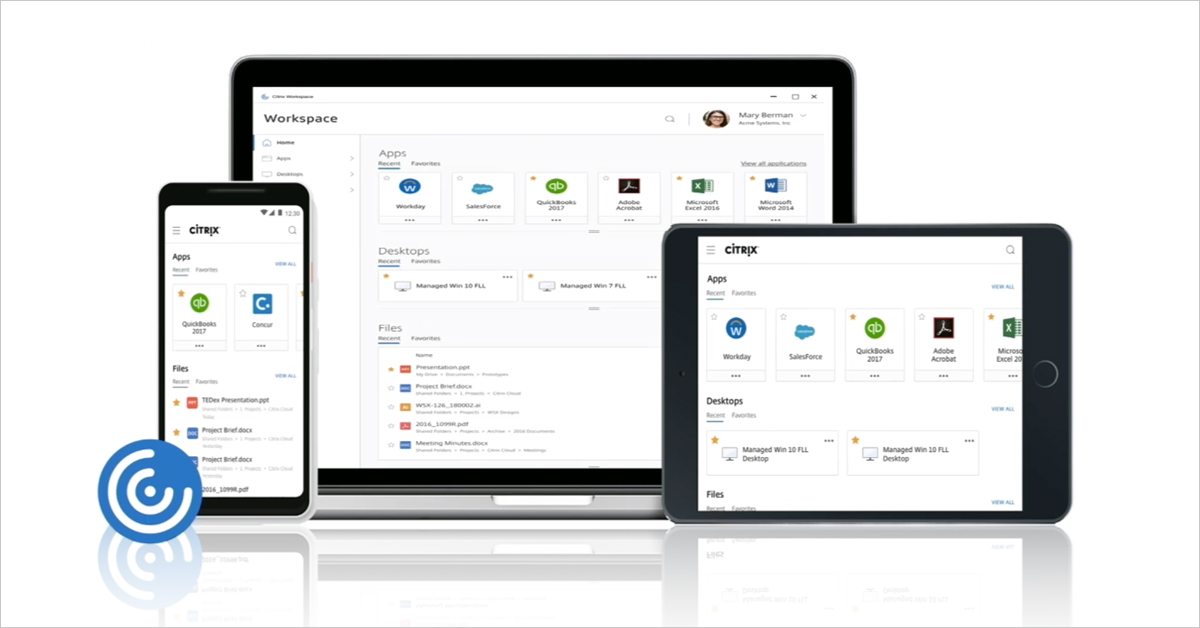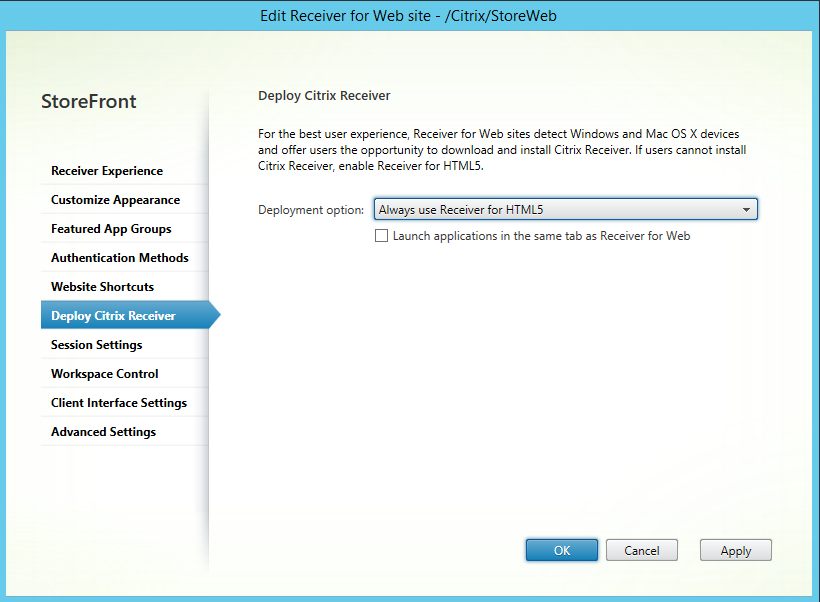When you use Citrix PDF printer in a session launched from Citrix Workspace app for HTML5, set the Client printer names setting as default or select Standard printer names. If you select Legacy printer names, Citrix Workspace app for HTML5 doesn’t support the Citrix PDF Printer option. Direct connections to print servers. When your workspace solution of choice offers support for HTML5 client access (without needing to install and update client software, or setting up a VPN, for example) even the most novice user will be able to work from home without to much hassle.
Average time to read:4minutesStraightforward, low maintenance, and supported on all devices running a Browser, that were and still are some of the main “selling points” with regards to HTML5 based VDI/RDSH clients. Simple? Sure, but not without challenges. Let’s have a closer look and see what comes up.
- Whenever you download a file over the Internet, there is always a risk that it will contain a security threat (a virus or a program that can damage your computer and the data stored on it). To check the file for security threats, click Install and then save the file to a suitable location on your computer.
- How to switch from Citrix Receiver Lite (HTML5) to the Full client Adding, Removing, and Refreshing Apps Within Citrix Receiver How to configure Google Chrome for use with the NetScaler Web Portal.
Citrix Html5 Client Download
No matterthe device you are on… a Mac, Windows machine, Thin Client, a Chromebookperhaps, if it has a browser you are good to go. An URL is all you need, therest is built directly into the browser.

When yourworkspace solution of choice offers support for HTML5 client access (withoutneeding to install and update client software, or setting up a VPN, forexample) even the most novice user will be able to work from home without tomuch hassle. Today, that’s worth something, right?
Advantagesvs drawbacks
While wecould focus on some of the drawbacks and potential challenges, let’s talk a bitabout what we can do instead of what we cannot do, using the right solutionthat is.
As some of you might know, a while back I got introduced to Awingu, I’ve written about them previously here and here (links to brianmadden.com). As of their 4.3 release some interesting HTML5 based features saw the light of day. And even though there is a tight interaction with the underlying operating system, everything you do and see is still a 100% browser based.
Awingu runson in-house developed RDP to HTML5 technology, as they like to call it.
The newOperating System

For yearsis has been said that the web browser will become the new OS, especially with somany SaaS solutions on the rise. This, combined with the ability to aggregateall other sorts of applications (Web, Mobile, Windows), data, and desktop froma single pane of (web based) glass makes a killer combination. For this to workproperly (of course not all use-cases are supported) you need to be able to offer(at least) some the most used features asked for by the “average” user.
Multi-monitorsupport
Take multimonitor support, for example. This has always been challenge. And not just forHTML5 based clients. The newly introduced Awingu Display Manager enables you toadd multiple screens (with a maximum of 16, the RDP limit) and various ways totake care of how applications and other windows will be displayed. This appliesto streamed applications and/or virtual shared desktop sessions. Alternatively,different applications can each be opened in a new, separate browser tab, needstuff.
Be smart

They’vealso managed to build in support for smartcards. By the use of their in-housedeveloped Awingu Remote Application Helper Awingu provides Smartcard support througha standard HTML5 session on any browser. And you know those system traynotifications? They’ve got those as well, sort of. You can get a notificationwhen something happens in a tabbed-out application session.
Awingu runson in-house developed code. The Awingu HTML5 gateway connects with RDPplatforms in the back-end (e.g. RemoteApp, Remote Desktop, VDI) and providesend users with secure (SSL) and high-performance access through HTML5 technology.
Printing
Ifmulti-monitor support is a hassle, what about printing? Awingu offers choicebetween using your own office based network printers, or the Awingu virtualprinter – no print drivers needed. I’ve heard that there is more print-goodnesson the way.
As mentionedpreviously many think that working from a browser (exclusively) will have a bigfuture. As a result there are multiple competitors playing the field as well, alllooking for their piece of the pie. Due to the advancements in HTML5 technologydevelopers are now capable to create full-blown web applications that would nothave been possible with earlier versions of HTML.
What do youthink? Do you have any, good or bad real-world experiences?
To summarize
- Smartcard support – check
- Multi-monitor support – check
- Secure by default – check
- No client installation needed –check
- Application notifications – check
- All browsers and machine types supported– check
- All your applications, data anddesktops from a single web-based interface – check
- Secure SSL connections and no datastored on your local machines – check
- Ability to brand your workspace –check
- Printing directly from your browserusing network printers – check
- Direct integration with a moderndevice management solution (MDM) – check
- MFA built-in by default: The numberof people using MFA with Awingu, because of this, is way higher than, forexample, Office 365.
BYOD
Since your endpoint only needs a browser this helps with BYOD adoption, which is still a big challenge for most companies. I mean, we have been discussing it for years, but from where I’m standing only few got it right, from a company perspective I mean. Often they lack not one, but two things… For one, a decent company policy is often nowhere to be found, and secondly, a solid (modern) management solution.
Earlier I wrote about Awingu and BlackBerry (BB) joining forces, where BB adopted the Awingu stack into their “BlackBerry Access” offering, named: The BlackBerry Digital Workplace. You might have read about it in the news, if not, go here to find out more, it includes the official press-release as well.
ZeroTrust, the new normal
Users are never actually “on” the network, and there is no need for a VPN. By using the power of the virtualized infrastructure combined with browser isolation the entire workspace of the user is “pushed” to them within a virtual connection.
End-userslogin via the browser of their BYOD (or managed) device. They get access topublished applications, desktops and files remotely, in HTML5. No data sitslocally. Even if the device is compromised, there is no direct access to yourcompany assets.
There is no“pipe” that can be used by malicious hackers, all sessions are encrypted, andMFA is a default built-in offer for all customers. The user is alsocontinuously authenticated as they operate in that secure remote session andthe system is integrated with a Single Sign-On (SSO) capability to make loginand ease-of-use readily available.
If it fits your business case, and I can think of multiple, they offer a complete package.

Well that’sabout it for now. I know they are working on more cool stuff as we speak soI’ll keep you guys updated if I find out anything new.
Thanks forreading.
It is always recommended to check the system requirements listed on the Product Documentation for the version you want to install and confirm that your environment meets the requirements before getting started.
Following steps are required to enable Receiver for HTML5:
A store needs to be created in advance of this step.Citrix Html5 Client Software
- Open the Receiver Deployment settings in the StoreFront console
- XenApp/XenDesktop 7.6 LTSR (StoreFront 3.0) :Select Receiver for Web in the left pane
- Select the site providing the applications and desktops you want to make available to Receiver for HTML5 users in the central pane.
- Click Deploy Citrix Receiver in the right-hand pane.
- StoreFront 3.8: Select the store providing the applications and desktops you want to make available to Receiver for HTML5 users and click Manage Receiver for Web Sites in the Actions pane.
- Select the website to enable Receiver for HTML5 and click Configure.
- Select Deploy Citrix Receiver.
Select one of the following options to enable Receiver for HTML5 :
· Use Receiver for HTML5 if local install fails
· Always use Receiver for HTML5
If you wish users to always use Receiver for HTML5 to access XenApp/XenDesktop applications or desktops, select the second option.
XenApp/XenDesktop 7.6 LTSR (StoreFront 3.0) :
Citrix Html5 Client Download
- Go to the Group Policy Management Console or Citrix Studio to configure HDX policies.
- Select the WebSockets connections policy setting and allow WebSockets connections.
Additional Resources

Comments are closed.